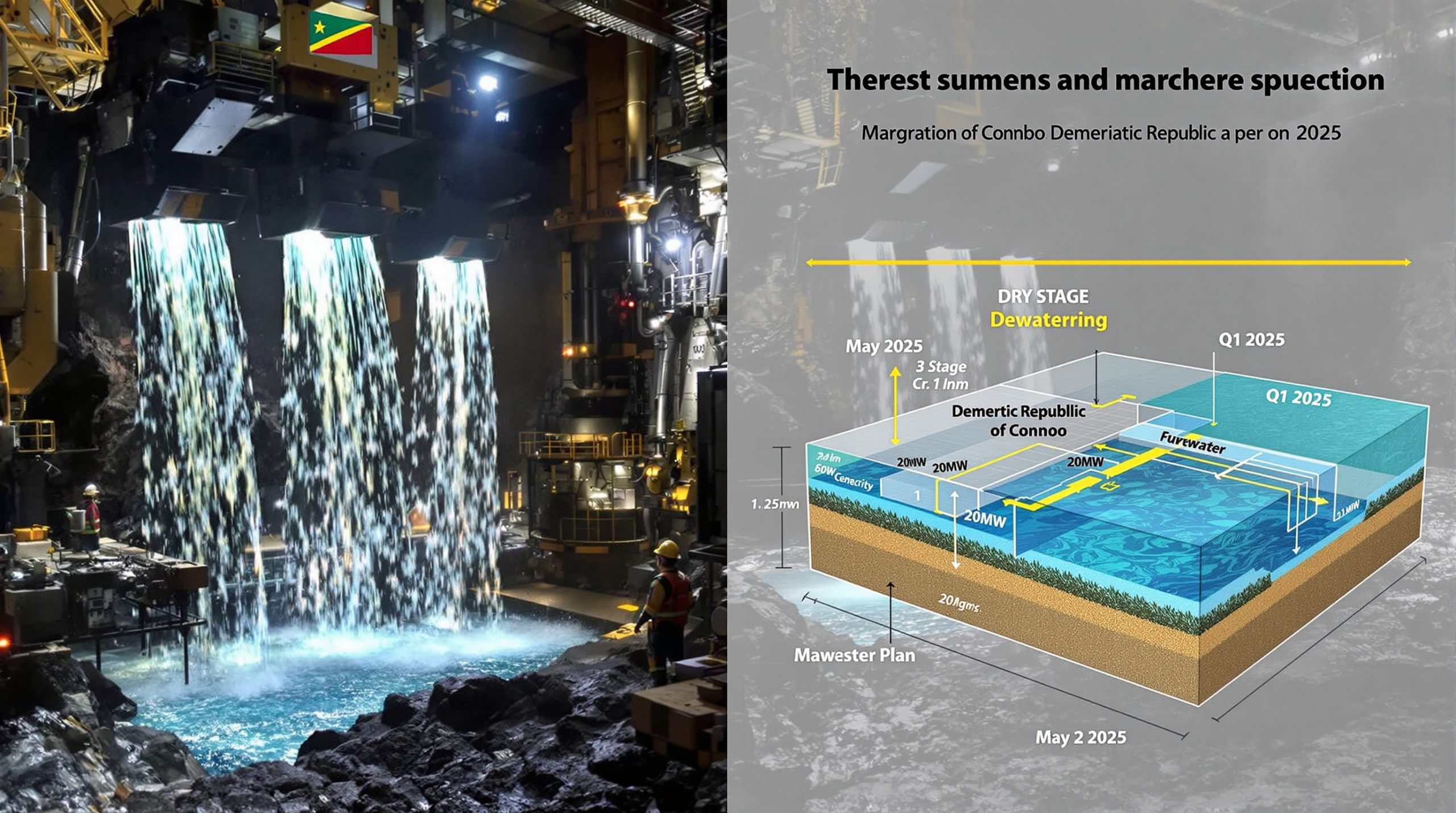The Magnesium Market in 2025: Price Consolidation and Supply Expansion
The magnesium market has entered a distinctive consolidation phase as of June 2025, with magnesium prices and production resumptions maintaining a narrow trading range despite looming production increases. This stability reflects a delicate balance between cautious demand and disciplined supply management, though significant challenges lie ahead for market participants.
Current Price Stability and Trading Patterns
In the Fugu region, China's primary magnesium production hub, prices have settled into a tight range of 16,150-16,250 yuan per metric ton for standard magnesium ingots. This represents a three-week horizontal consolidation pattern, with fluctuations limited to just 100-200 yuan within the broader 16,000-16,300 yuan band.
Export markets mirror this stability, with China FOB prices holding steady at $2,220-2,300 per metric ton. This price consistency represents a significant departure from the volatility seen in previous quarters and suggests the market has found a temporary equilibrium point.
"The current magnesium price consolidation reflects a weak balance between steady production and tepid demand growth, creating a sideways price pattern that's lasted nearly a month." — Shanghai Metal Market (SMM) analyst
The reduced price volatility doesn't necessarily indicate a healthy market, however. Rather, it suggests a standoff between producers attempting to maintain price discipline and buyers adopting increasingly cautious purchasing strategies.
Production Resumptions: The Coming Supply Wave
The current price stability faces a significant threat from scheduled production resumptions in early July 2025. Several magnesium facilities that have been idle or operating at reduced capacity are preparing to restart operations, potentially disrupting the delicate market balance.
These production increases represent a critical test for the informal producer alliances that have maintained price discipline throughout the second quarter. Industry analysts note that existing producers have formed loose coalitions to prevent price erosion, but this strategy faces mounting pressure.
Key factors affecting production resumptions include:
- Environmental compliance requirements affecting restart timelines
- Power supply availability in key production regions
- Skilled labor constraints at previously shuttered facilities
- Capacity utilization targets for newly restarted operations
The magnitude of these production increases could shift the market from its current equilibrium state to one of oversupply by late July or early August. This transition would likely put significant downward pressure on prices unless accompanied by corresponding demand growth.
Demand Dynamics: A Tale of Two Markets
The current magnesium market exhibits a notable divergence between domestic Chinese demand and international buying patterns. This bifurcation helps explain the market's price consolidation pattern and provides insight into potential future price directions.
Domestic market conditions remain relatively stable, with predictable consumption patterns maintaining baseline support for producers. Local industrial applications, particularly in the aluminum alloy sector, continue to absorb consistent volumes through established distribution channels.
In contrast, international market dynamics have weakened considerably, with foreign trade orders experiencing a temporary but significant stagnation. International buyers have adopted increasingly cautious positions, limiting purchases to essential volumes and avoiding inventory accumulation.
This cautious international approach reflects both macroeconomic uncertainties and expectations of potential price declines following Chinese production increases. Rather than securing forward supplies, many buyers are strategically waiting for potential price weaknesses before committing to larger purchases.
Trading Strategies: Calculated Caution
Market participants have adopted distinctly defensive positioning in response to current conditions and anticipated supply increases. The prevailing sentiment among traders remains predominantly bearish, with most expecting price pressures to intensify by mid-July.
This sentiment has translated into specific buying behaviors:
- Opportunistic bulk purchasing at temporary price dips
- Minimal inventory building beyond immediate requirements
- Focus on fulfilling existing orders rather than speculative positions
- Defensive hedging against potential price volatility
Traders with existing commitments are particularly focused on "buying the dip" strategies, waiting for short-term price weaknesses to fulfill outstanding orders at more favorable levels. This approach minimizes inventory carrying costs while providing some protection against potential market downturns.
Market Outlook: Pressure Points and Projections
The immediate outlook for magnesium prices and production resumptions suggests continued range-bound trading in the very near term, followed by increasing downward pressure as production resumptions take effect. Without significant new demand catalysts, the price center of gravity is likely to shift lower as supply expands.
Several scenarios appear possible for July-August 2025:
| Scenario | Probability | Price Impact | Key Triggers |
|---|---|---|---|
| Continued Consolidation | 30% | Stable within current range | Delayed production restarts, unexpected demand increase |
| Moderate Decline | 50% | 5-10% decrease from current levels | Scheduled production resumptions, continued weak demand |
| Sharp Correction | 20% | 10-15%+ decrease from current levels | Accelerated production, destocking by traders, economic headwinds |
The most likely outcome involves a gradual price erosion as new production volumes enter the market, testing the resolve of producer alliances to maintain price discipline. The pace and magnitude of this decline will depend largely on how aggressively new market entrants price their output and whether existing producers maintain solidarity.
Critical Factors to Monitor
Market participants should closely track several key indicators that will shape magnesium price developments in the coming months:
- Production resumption progress at key facilities in the Fugu region
- Development of overseas order volumes, particularly from automotive and aerospace sectors
- Sustainability of producer price discipline in the face of increased competition
- Inventory levels throughout the supply chain
- Transportation and logistics factors affecting delivery schedules and costs
These factors will collectively determine whether the current price consolidation represents a temporary pause before further declines or a sustainable equilibrium reflecting true market fundamentals.
Evolving Supply-Demand Fundamentals
The magnesium market's current weak balance appears increasingly likely to tilt toward oversupply as production increases potentially outpace demand growth. This structural shift would require new demand stimuli to restore equilibrium and prevent sustained price pressure.
Several factors could influence this evolving balance:
Potential Supply Constraints
- Environmental compliance requirements that might delay or limit production increases
- Power supply restrictions in key production regions during peak summer demand periods
- Technical challenges in restarting long-idle production facilities
- Producer discipline in adjusting output to market conditions
Demand Catalysts and Limitations
- Seasonal patterns in downstream industries, particularly automotive production
- Infrastructure development initiatives requiring magnesium-containing materials
- Lightweight materials adoption in transportation and consumer electronics
- Substitution risks if prices remain elevated relative to alternatives
The interaction of these factors will determine whether the market achieves a new equilibrium or experiences more sustained price pressure. Without significant demand growth, the production increases scheduled for July could create persistent oversupply conditions through the third quarter, affecting iron ore price trends in related industries.
FAQ: Understanding Magnesium Market Dynamics
What factors could reverse the current price consolidation trend?
Several developments could potentially disrupt the current consolidation pattern and drive prices higher:
- Significant international order increases, particularly from automotive or aerospace sectors
- Unexpected production disruptions due to environmental restrictions, power limitations, or technical issues
- Coordinated producer output reductions in response to price pressures
- Supply chain bottlenecks affecting material availability in key consumption regions
However, market analysts generally consider these bullish scenarios less likely than continued or increased price pressure given current fundamentals. This perspective aligns with broader iron ore forecast insights for industrial metals.
How do transportation and logistics affect magnesium pricing?
Transportation factors play a significant role in magnesium market dynamics, particularly for export pricing. Key impacts include:
- Shipping costs directly affecting FOB price competitiveness
- Container availability influencing delivery schedules and reliability
- Port congestion creating regional price differentials and market distortions
- Transportation fuel costs affecting delivered prices to end users
These logistics factors can sometimes create temporary regional price dislocations that offer arbitrage opportunities for well-positioned traders, similar to patterns seen in gold prices analysis across different markets.
What role do inventory levels play in the current market?
Inventory positions throughout the supply chain significantly influence current market behavior:
- Producer inventories affect willingness to offer price concessions
- Trader inventories determine purchasing urgency and risk appetite
- End-user inventories influence timing and volume of new orders
- Regional stock distributions create opportunities for geographic arbitrage
Current inventory levels remain relatively balanced, neither excessively high nor critically low, contributing to the market's price consolidation pattern. However, this could change rapidly if production increases outpace consumption or if buyers begin more aggressive destocking in anticipation of price declines.
How might environmental regulations impact future production?
Environmental policies increasingly influence magnesium production economics and operational continuity:
- Emissions requirements affecting production methods and costs
- Energy efficiency standards necessitating facility upgrades or modifications
- Water usage restrictions in drought-prone production regions
- Waste management regulations adding compliance costs
These environmental factors add complexity to production resumption timelines and may create unanticipated supply constraints that could partially offset the expected production increases. Furthermore, mine reclamation trends are increasingly impacting production planning in the sector.
The Outlook for Magnesium Prices and Production
The magnesium market stands at a critical juncture, with current price stability likely to give way to increased volatility as production resumptions test market fundamentals. The coming months will reveal whether producer discipline can withstand the challenge of expanded supply or whether prices will adjust downward to reflect new market realities.
For market participants, this environment demands flexible strategies that can adapt to changing conditions. Buyers may benefit from maintaining minimal inventories while preparing to increase purchases if significant price corrections materialize. Producers, meanwhile, face difficult decisions about output levels and pricing strategies in an increasingly competitive landscape.
The most likely outcome appears to be a gradual transition from the current consolidation pattern to a modestly lower price range, though the pace and magnitude of this adjustment remain subject to considerable uncertainty. Market participants should prepare for increased volatility as this transition unfolds, with the potential for both temporary price spikes and accelerated declines depending on how supply and demand factors evolve.
Market Insight: "The current price stability despite imminent production increases suggests producers are attempting to maintain discipline, but this strategy faces significant challenges as new supply enters the market without corresponding demand growth." — SMM Market Analysis
As the magnesium market navigates these challenging conditions, flexibility, information advantage, and strategic patience will likely prove the most valuable assets for participants across the supply chain. Additionally, understanding related uranium market dynamics may provide valuable context for broader commodity trends affecting industrial metals production.
Want to Spot the Next Major Mineral Discovery Before the Market?
Stay ahead of the crowd with Discovery Alert's proprietary Discovery IQ model, which instantly notifies investors about significant ASX mineral discoveries across commodities like magnesium and transforms complex data into actionable insights. Explore why major discoveries can lead to exceptional returns by visiting our dedicated discoveries page and begin your 30-day free trial today.




